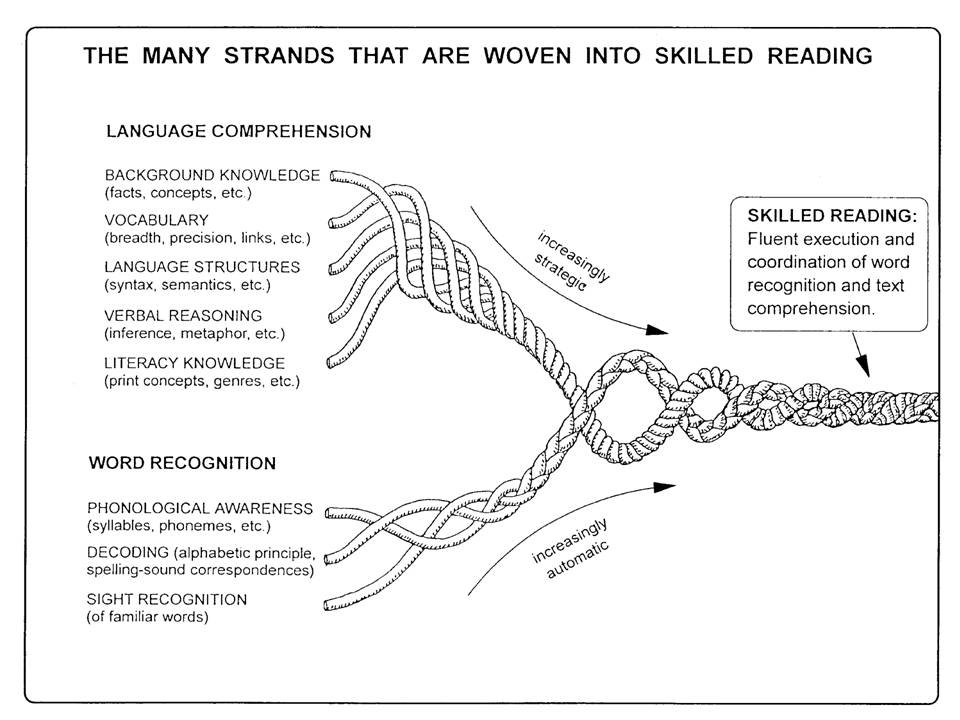Reimagining Psychoeducational Testing: Scarborough’s Reading Rope
This is the first post in what I hope will be a series about improving the comprehensibility and accessibility of psychoeducational and neuropsychological testing reports for teachers and parents. I am not a psychologist, but I have spent a decade reading these reports and helping parents and teachers interpret these reports.
If you’re reading this, you probably already know what Scarborough’s Reading Rope is. But in case you have no idea what I’m talking about…have no fear:
Scarborough’s Reading Rope identifies and organizes the different components of reading and demonstrates their increasing interconnectedness, as the reader gains experience and skill. The lower strands depict the skilled reader recognizing words fluently and automatically. The upper strands show the skilled reader approaching the text with greater strategy and discernment, as they grow their knowledge of vocabulary, content, and semantics. Over time, the many strands become two: word recognition and language comprehension. And then the two remaining strands combine to become one: skilled reading.
My favorite thing about Scarborough’s Reading Rope is that provides a common, comprehensible model with which to discuss and address specific reading strengths and deficits. I just showed the model to my partner (who has zero experience in education and reading development beyond living with me) and asked him to explain how he understood it. He basically reproduced what I wrote above.
So where am I going with this?
I’ve read hundreds of psychoeducational and neuropsychological testing reports. I’ve helped hundreds of parents and teachers make sense of these reports. I’ve never seen even a reference to Scarborough’s Reading Rope or the simple view of reading in these reports, even though these students often had dyslexia or another language learning disability.
Instead, I saw inscrutable numbers and charts that parents and teachers didn’t understand. The prose was often cumbersome, meandering, and irrelevant. This led to parents skipping to the end of the report to get the diagnoses and the IQ scores. It led to teachers skipping to the end to see what they were legally required to do. In most cases, despite good-faith efforts on all sides, most parents and teachers walked away with a limited understanding of student strengths and weaknesses.
Here’s where I’m going with this:
Every student with a language-based learning disability should have an annotated and personalized version of the reading rope in their psychoeducational testing.
Every parent of a child with a language-based learning disability should be able to understand their child’s “reading rope.” Every child should understand this too when they’re curious and ready.
Every school needs to be prepared to address the individual deficit strands with high-quality Tier 1 instruction and evidence-based interventions.
Hollis Scarborough originally invented the reading rope to explain the complexities of reading to parents. Let’s use it for its original purpose. And while we’re at it, what other equivalent “reading rope” models can be built and shared?

